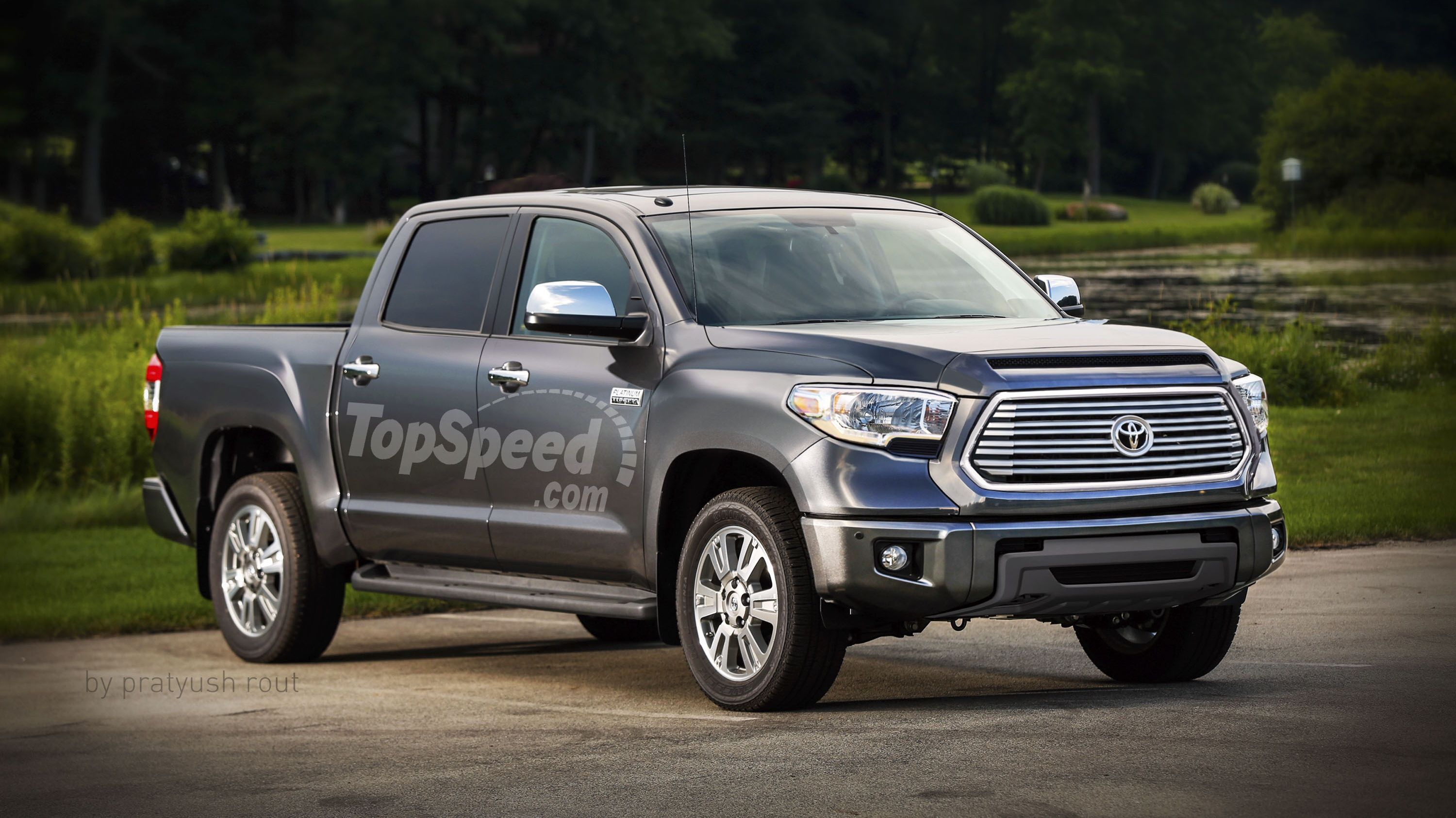The Toyota Tundra is finally getting some much-deserved attention from Toyota engineers and designers, and a complete redesign is coming in the next few years. That’s according to Jack Hollis, group vice president and general manager of the Toyota division, who spoke with Auto Guide. “I don’t think there’s much higher priority than that,” he said, referring to the next new half-ton. “Tundra has been out for plenty of time so we’re looking at what the new one would look like.”
Hollis isn’t kidding about the Tundra’s age. The current truck has been around since 2007 with a mid-cycle refresh in 2014 and the addition of Toyota Safety Sense as standard for 2018. Beyond that, the truck's frame and powertrain have soldiered on unchanged. Conversely, the competition from Ford, General Motors, Ram, and Nissan has been red-hot by comparison. In fact, GM and Ram are debuting all-new versions of their trucks for 2019.
Keep reading for more on the future Toyota Tundra.
What The Future Holds
One look at Toyota’s full vehicle lineup points to the Tundra being next in line for updates. The Camry is completely new, the next-generation RAV4 is on the brink of debut, and a new Corolla is said to be deep in development. With trucks and SUVs being so hot these days, Toyota has no other choice but to turn its attention to the Tundra (and hopefully soon the 4Runner.)
Of course, it takes years to develop a ground-up reinvention of a vehicle. Toyota is undoubtedly in the development stages for the Tundra. The automaker made a very publicized ordeal over its teardown and study of a 2007 Tundra that drove over a million miles with very few mechanical issues despite its hard life as a hotshot delivery truck for oil companies. Dissenters will say Toyota is using the million-mile truck to calculate how much to under-engineer the next Tundra in order to save on costs, however, Toyota’s mantra of quality, dependability, and reliability (QDR is an in-house catchphrase) suggests the opposite. We’re leaning in that direction, too.
Another big cog in the wheel of improvement is production volume. Toyota’s San Antonio plant in Texas is operating beyond its original maximum capacity in order to meet demand. Both the Tundra and Tacoma are built there. Toyota has since lightened the load by recently opening a second assembly plant for the Tacoma in Baja California, Mexico. The plant will produce some 40,000 Tacomas annually, allowing for a greater percentage of Tundra production in San Antonio.
Our speculative review on the next-generation Tundra has it debuting for the 2019 model year. We theorized the truck’s venerable 5.7-liter i-Force V-8 will get an updated fuel system, much like the Tacoma’s D-4S system. It has both direct and port fuel injection to meet both power demands and efficiently and emissions requirements. Toyota could even add the dual Atkinson/Otto cycles for even more power and efficiency. We figure an eight- or 10-speed automatic transmission will be debuting, too, replacing the aging six-speed automatic.
Our fingers are also crossed for a fully boxed steel frame. Currently, the Tundra uses what Toyota calls its “triple tech frame.” As the name implies, the ladder frame uses three different cross-section types that include a fully boxed engine cradle, a reinforced C-channel under the cab, and an open C-channel under the bed. Every other truck maker uses a fully boxed frame from bumper to bumper. This ensured the truck has a solid backbone for better suspension performance and increased payload and towing capabilities.
In keeping with the 2018 addition of Toyota’s active and passive safety suite called Toyota Safety Sense, the next-generation Tundra will undoubtedly come standard with this system. Automatic emergency braking, lane keep assist, blind spot monitoring, rear cross-traffic alert, and of course, a backup camera will all be included.
Toyota would also be wise to revive the single cab option. The Tundra dropped the single cab configuration in 2017 due to slow sales, though Toyota is seemingly ignoring the massive market of fleet sales. With the right combination of capability, bed accessories, and low pricing, Toyota could steal some serious market share from Ford, GM, and Ram. Nissan is already marching down this road with its new Titan and Titan XD pickups, so Toyota has some serious ground to catch up.
As for pricing, we can expect Toyota to charge more for its next Tundra, though it cannot price itself out of the race. The competitions’ trucks start near $30,000 and crest around $60,000. The next Tundra will have to match this to be successful. It will also have to offer more luxurious trim levels, too. The competition has things like massaging seats and a panoramic moonroof – and that’s what high-end buyers are expecting.
References
Toyota Tundra
Read our full speculative review on the 2019 Toyota Tundra.
Read our full review on the 2014 Toyota Tundra.
Read our full driven review on the 2017 Toyota Tundra Platinum.
Read our full driven review on the 2015 Toyota Tundra TRD Pro.

